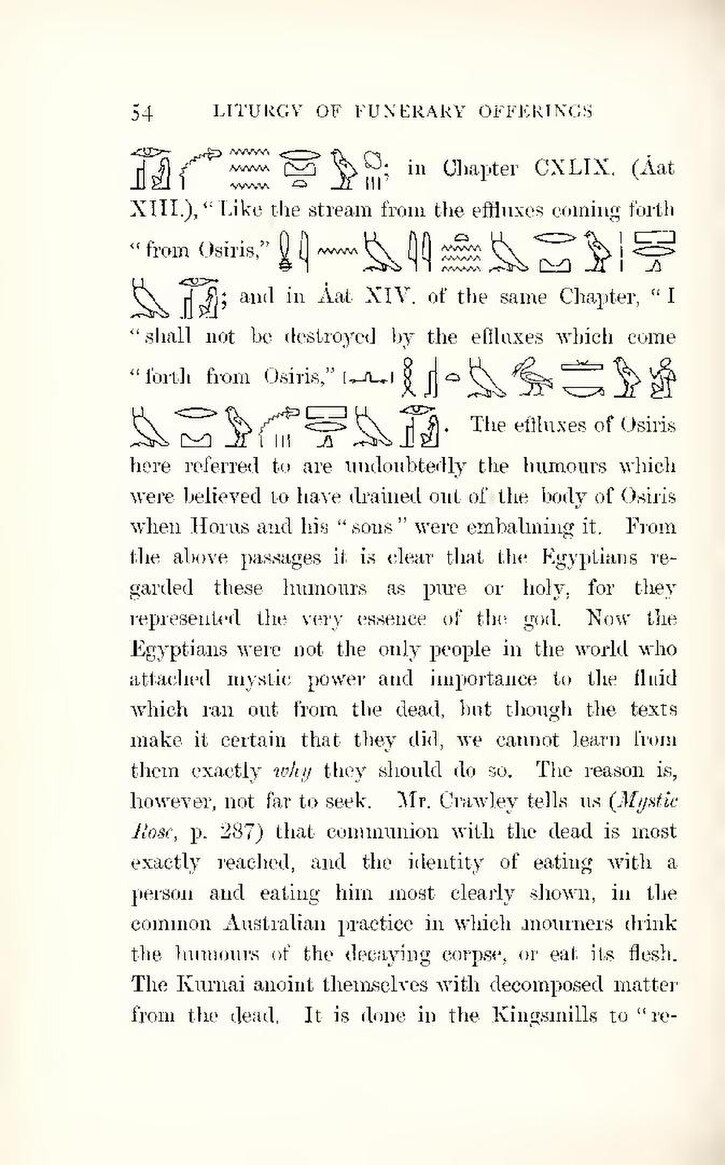54
LITURGY OF FUNERAL OFFERINGS
; in Chapter CXLIX. (Ȧat XIII.), "Like the stream from the effluxes coming forth from Osiris,"
; and in Ȧat XIV. of the same Chapter, "I shall not be destroyed by the effluxes which come forth from Osiris,"
. The effluxes of Osiris here referred to are undoubtedly the humours which were believed to have drained out of the body of Osiris when Horus and his "sons" were embalming it. From the above passages it is clear that the Egyptians regarded these humours as pure or holy, for they represented the very essence of the god. Now the Egyptians were not the only people in the world who attached mystic power and importance to the fluid which ran out from the dead, but though the texts make it certain that they did, we cannot learn from them exactly why they should do so. The reason is, however, not far to seek. Mr. Crawley tells us (Mystic Rose, p. 287) that communion with the dead is most exactly reached, and the identity of eating with a person and eating him most clearly shown, in the common Australian practice in which mourners drink the humours of the decaying corpse, or eat its flesh. The Kurnai anoint themselves with decomposed matter from the dead. It is done in the Kingsmills to "re
